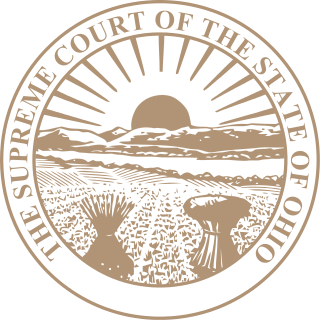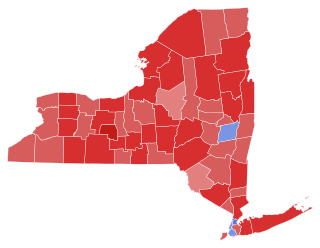External links
- "Giusep Nay 1942 - *". Schweizerisches Bundesgericht. Retrieved 12 March 2024.
Giusep Nay (born 9 August 1942 in Trun, Grisons) was the president of the Federal Supreme Court of Switzerland for 2005 and 2006; he resigned in 2006.
Nay was elected to the Supreme Court in 1988 after being nominated by the Christian Democratic People's Party of Switzerland. Nay, former MP Lili Nabholz and law professor Giorgio Malinverni were nominated by the Swiss government to succeed Luzius Wildhaber in 2007 as the Swiss judge at the European Court of Human Rights; Malinverni was elected.

The University of Fribourg is a public university located in Fribourg, Switzerland.

The Supreme Court of the State of Ohio is the highest court in the U.S. state of Ohio, with final authority over interpretations of Ohio law and the Ohio Constitution. The court has seven members, a chief justice and six associate justices, who are elected at large by the voters of Ohio for six-year terms. The court has a total of 1,550 other employees. Since 2004, the court has met in the Thomas J. Moyer Ohio Judicial Center on the east bank of the Scioto River in Downtown Columbus. Prior to 2004, the court met in the James A. Rhodes State Office Tower and earlier in the Judiciary Annex of the Ohio Statehouse.

The Federal Supreme Court of Switzerland is the supreme court of the Swiss Confederation and the head of the Swiss judiciary.
Events from 2004 in Switzerland.

The Supreme Court of Illinois is the state supreme court, the highest court of the judiciary of Illinois. The court's authority is granted in Article VI of the current Illinois Constitution, which provides for seven justices elected from the five appellate judicial districts of the state: three justices from the First District and one from each of the other four districts. Absent mid-term vacancy, each justice is elected for a term of ten years, which may be renewed and the chief justice is elected by the court from its members for a three-year term.

Corina Casanova is a Swiss politician who was the Federal Chancellor of Switzerland between 2008 and 2015.
Giorgio Malinverni is a Swiss law professor. On 27 June 2006, he was elected by the Parliamentary Assembly of the Council of Europe as the judge in respect of Switzerland on the European Court of Human Rights. He holds a PhD from the Graduate Institute of International Studies in Geneva.

Hubert Utterback served very briefly on the Iowa Supreme Court, then was elected as a Democrat to the United States House of Representatives, serving only one term.

The 1946 New York state election was held on November 5, 1946, to elect the governor, the lieutenant governor, the state comptroller, the attorney general, a U.S. Senator, the chief judge and an associate judge of the New York Court of Appeals, as well as all members of the New York State Assembly and the New York State Senate.

The 1942 New York state election was held on November 3, 1942, to elect the governor, the lieutenant governor, the state comptroller, the attorney general and two U.S. Representatives At-large, as well as all members of the New York State Assembly and the New York State Senate.

The 1936 New York state election was held on November 3, 1936, to elect the governor, the lieutenant governor, the state comptroller, the attorney general, a judge of the New York Court of Appeals and two U.S. Representatives-at-large, as well as all members of the New York State Assembly and the New York State Senate.

Hugh Llewellyn Nichols was an American politician who served as the 32nd lieutenant governor of Ohio from 1911 to 1913 and Chief Justice, Supreme Court of Ohio 1913 to 1920.
Irving Lehman was an American lawyer and politician from New York. He was Chief Judge of the New York Court of Appeals from 1940 until his death in 1945.

The 1949 New York state election was held on November 8, 1949, to elect a judge of the New York Court of Appeals and a U.S. Senator.

Noma D. Gurich is an American attorney and jurist who is serving as an associate justice of the Oklahoma Supreme Court. Gurich was appointed the State's highest court by Governor Brad Henry in 2010 and assumed office on February 15, 2011. Gurich was appointed to the Court following the death of long-time Justice Marian P. Opala. Gurich is the third woman in state history after Alma Wilson and Yvonne Kauger to be appointed to the Supreme Court.

The Schweizerischer Studentenverein is a society of colour bearing students of both genders and at the same time a federation of student corporations which are called sections. Its members are students and former students of high schools, universities and universities of applied sciences in Switzerland, Germany, Austria and Italy. Formerly, sections also existed in Belgium, France and in the Czech Republic. Its motto is virtus, scientia, amicitia!

The Stone Court refers to the Supreme Court of the United States from 1941 to 1946, when Harlan F. Stone served as Chief Justice of the United States. Stone succeeded the retiring Charles Evans Hughes in 1941, and served as Chief Justice until his death, at which point Fred Vinson was nominated and confirmed as Stone's replacement. He was the fourth chief justice to have previously served as an associate justice and the second to have done so without a break in tenure. Presiding over the country during World War II, the Stone Court delivered several important war-time rulings, such as in Ex parte Quirin, where it upheld the President's power to try Nazi saboteurs captured on American soil by military tribunals. It also supported the federal government's policy of relocating Japanese Americans into internment camps.

The 1942 Wisconsin gubernatorial election was held on November 3, 1942.

On February 25, 2022, President Joe Biden announced that he would nominate Ketanji Brown Jackson to the position of associate justice of the Supreme Court of the United States to fill the vacancy by Stephen Breyer, who announced his retirement on January 27, 2022, at the age of 83. Jackson, a former law clerk of Breyer, was a judge on the United States Court of Appeals for the District of Columbia Circuit, having been appointed by Biden in 2021. Jackson is the first Black woman in U.S. history to be nominated to serve on the U.S. Supreme Court.
A federal decree is an act that can be adopted by the Swiss Federal Assembly in application of a federal law, insofar as the text does not contain rules of law, meaning that it can only be a decision on the application of general and abstract norms laid down in the law.